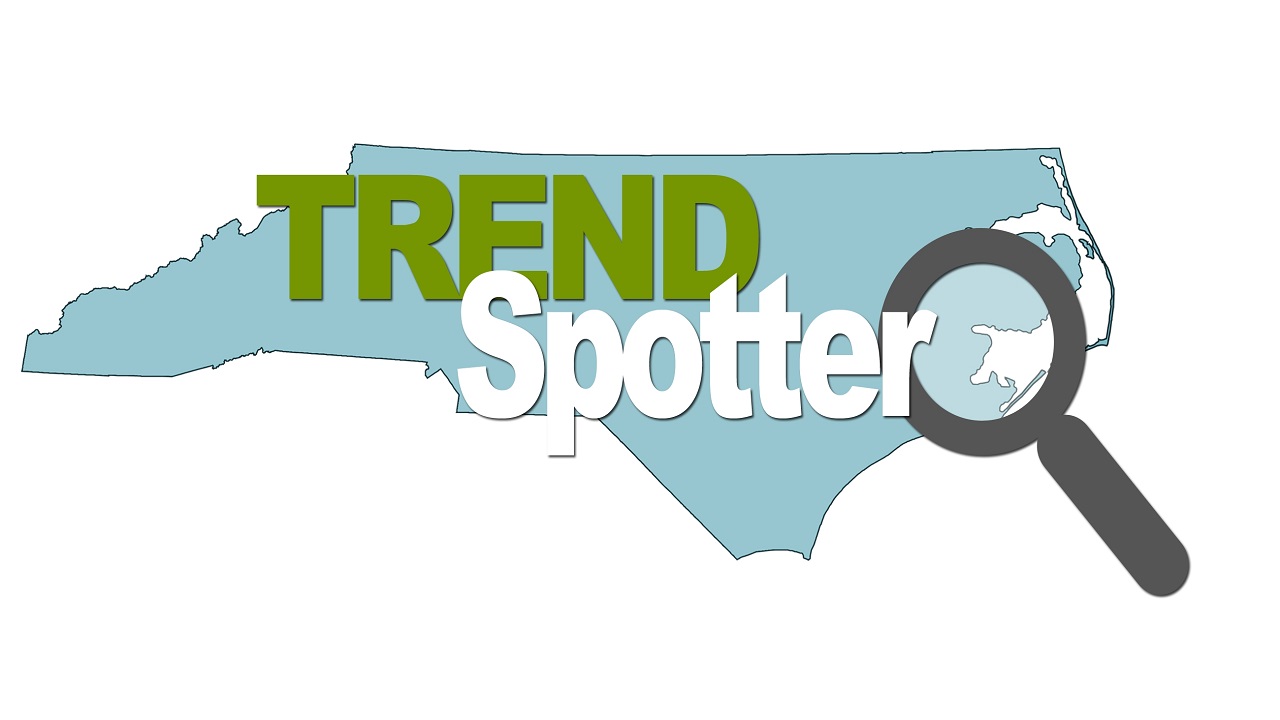By Joanne G. Carman and Richard M. Clerkin
As we resume our Trend Spotter reports, we are interested in what topics are most on the minds of our Trend Spotters, the panel of North Carolina nonprofits with less than $700,000 in annual revenues. More than just what is on their mind; we want to know what are the things executive directors are losing sleep over. These insomnia-inducing concerns will drive our upcoming Trend Spotter reports where we explore the causes and evidence-based solutions to help nonprofit executives hopefully sleep a little bit more easily going forward.
We asked our Trend Spotters to rate their reactions to a roster of questions about their funding, board, staff, volunteers, and general environment on a scale of “Keeps me up at night … to Allows me to sleep soundly.”
Sleeplessness Inducing
Many issues are causing nonprofit executives to lose sleep; adequate funding, recruiting and retaining board members and relationships with the board chair, planning, planning, collecting and managing data, people, and information technologies are chief among these causes. We explore these topics a bit more in-depth below.
Funding and Fund Raising. Not surprisingly, the number one item keeping our Trend Spotters up at night is funding. Almost 85 percent of respondents indicate that concerns over adequate funding causes them to lose sleep at night. We drilled down to look at a couple of approaches to fundraising and found that more than half (51 percent) lost some sleep over on-line fundraising, while almost three-fourths (74 percent) lost some sleep over making a face-to-face ask. Most (82 percent) have not given a thought about how they could use Giving Tuesday (“…is a global day of giving fueled by the power of social media and collaboration.” http://www.givingtuesday.org/) in their fundraising plans. However, for a majority of our Trend Spotters (51 percent) once they are able to get money flowing into their organizations, their financial and management internal controls provide them with a restful nights sleep.
Boards. Boards present our respondents with their next most sleeplessness inducing concerns. Two-thirds (66 percent) of respondents report that their boards keep them up at least part of the night. On the plus side, about one-third (32 percent) indicate that their boards help them rest well at night. In large part, the concern about board-related sleeplessness seems to be driven by having to find new board members (69 percent).
A respondent’s board chair’s impact on their sleep is evenly divided. Forty-six percent report board chairs cause sleeplessness, the same percentage that say their board chair help them rest peacefully at night. What is of potential concern, though, are the other 8 percent of Trend Spotters who report they do not give their board chairs much thought.
Planning. Strategic and succession planning also keep our Trend Spotters up at night. Two-thirds (66 percent) report that strategic planning causes at least some sleeplessness. Only 25 percent report that their strategic planning gives them the direction and comfort needed for a restful nights sleep. Succession planning also weighs heavily on some, but not all of our respondents. A small percent (13 percent) report that they can sleep soundly because of succession planning. A much larger group (59 percent) report that it causes them to lose some sleep. Somewhat worrying, though, is that 28 percent report that they do not give succession planning much thought.
Data. Issues concerning data and measuring outcomes are also keep our Trend Spotters up at night. While slightly more than one-fourth of our respondents report that their nonprofit’s ability to measure outcomes (26 percent) and use data in decision making (28 percent) help them to sleep peacefully at night, these folks were definitely in the minority. Roughly two-thirds report that collecting data (64 percent) and measuring outcomes (68 percent) cause them at least some sleepless nights. Given that our Trend Spotters have budgets of less than $700,000, it is not surprising that these time and resources intensive activities keep them up at night. Human Resources. Our respondents had much more mixed reactions to how human resource concerns impacted their sleep. They are relatively evenly split in how their staff impacts their sleep; 49 percent report at least some sleeplessness, 46 percent report their staff allows them to have a good night’s rest. There is a similar split with volunteers (46 percent sleepless vs 38 percent restful). Drilling down into this issue of managing staff a bit further shows that our Trend Spotters do lose some sleep. In particular, 60 percent have some sleepless nights because they cannot provide their staff with adequate professional development and training; 59 percent lose at least some sleep over concerns of retaining high quality staff; 44 percent worry about firing underperforming staff; 41 percent lose sleep over keeping their staff motivated. Although, at least on the issue of keeping their staff motivated, things are not so grim, 33 percent report keeping their staff motivated gives them a restful nights sleep.
We also asked our Trend Spotters about the level of diversity of their board and staff. Overall, the diversity of their board caused more sleeplessness (51 percent vs 26 percent) than the diversity of their staff. However, the plurality of respondents report they do not give much thought to their staff’s diversity (41 percent).
Information Technology. We also asked our Trend Spotters a couple of questions relating to information technology. The impact of concerns about social media on their sleep is decidedly mixed. One-third (33 percent) said it allowed them to rest at night, 36 percent report that they lose at least some sleep over social media, and the balance (31 percent) do not give it much thought. The plurality (46 percent) of our Trend Spotters do not give much thought to making their websites mobile friendly, while 41 percent lose at least some sleep over this issue.
Leading to a Restful Night’s Sleep
However, all is not lost. Collaboration is something that helps our nonprofit executives sleep more soundly. Next we explore a bit more in-depth how collaborations with different types of organizations affect a nonprofit executive director’s sleep.
Collaboration. The number one area that helped our Trend Spotters have good night’s sleep was their collaboration with other nonprofits. More than three-fifths (61 percent) report that collaborating with other nonprofits led to a restful night’s sleep. These small nonprofits do not seem to have much interaction with government; almost half (49 percent) report they do not give any thought to their collaboration with government. Collaboration with business brings about the biggest split for our respondents, with 42 percent reporting sleeplessness and 42 percent reporting restful night’s sleep due to their collaborations with local businesses. Similarly, collaboration with funders is also mixed. The plurality of respondents (41 percent) report sleeplessness associated with their collaborating with funders, with similar proportions reporting restfulness (31 percent) or no thought at all (28 percent) to their funder collaborations.
Implications
It has often been said that being a nonprofit executive director is one of the loneliest jobs in the world. The results to our Trend Spotters survey seem to back this up. For those things where executive directors are managing boards, employees, or processes like planning, collecting data, and information technologies, they seem to be losing sleep because they may be tackling this issues on their own. On the other hand, those activities that involve collaborations, where they are working with other people and organizations seem to help them sleep more soundly at night.
That raises the question, if collaborations are the one things that help our nonprofit executives sleep well at night, how can they leverage these relationships to reduce their level of sleeplessness related to funding, boards, planning, data, and personnel? While our current data cannot speak to that question, our future Trend Spotters reports will begin to probe for answers. Stay tuned for more evidence based resources!
Joanne G. Carman is an Associate Professor in the Political Science and Public Administration Department at the University of North Carolina-Charlotte. Her teaching and research focuses on program evaluation and nonprofit management, and she is the coordinator of the Graduate Certificate in Nonprofit Management.
Richard M. Clerkin is an Associate Professor in the Public Administration Department and Executive Director of the Institute for Nonprofits at NC State University. His teaching and research focuses on philanthropy and management and he is the director of the Graduate Certificate in Nonprofit Management.




